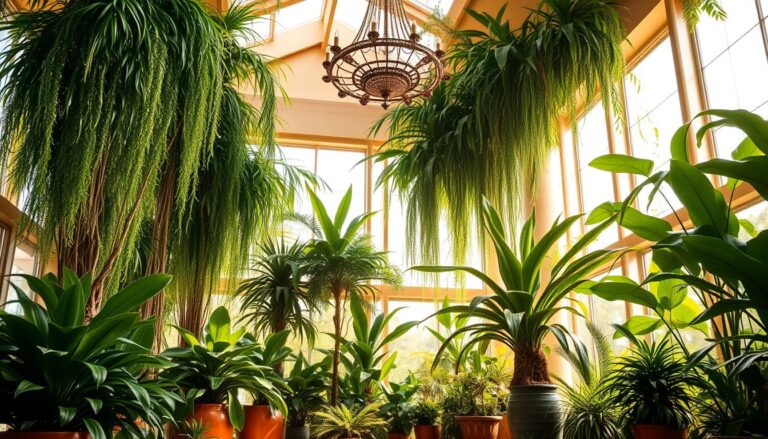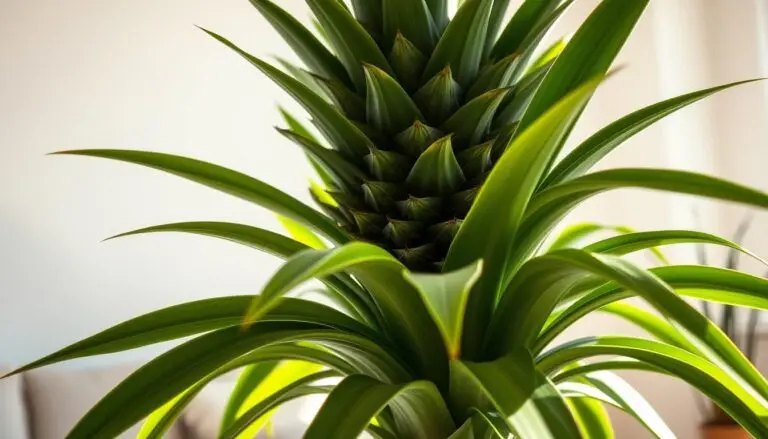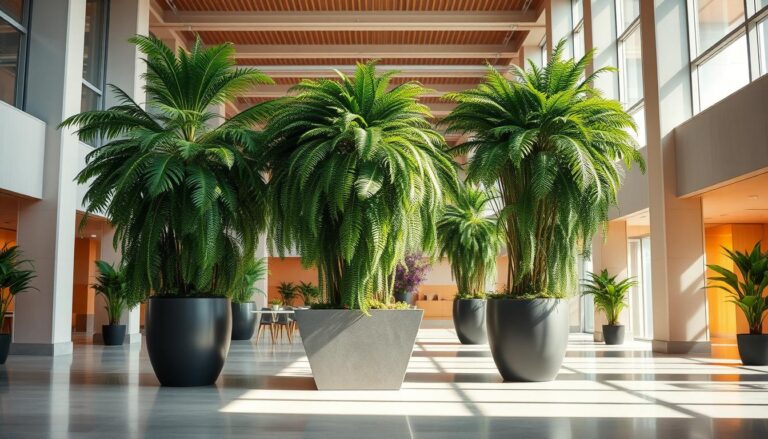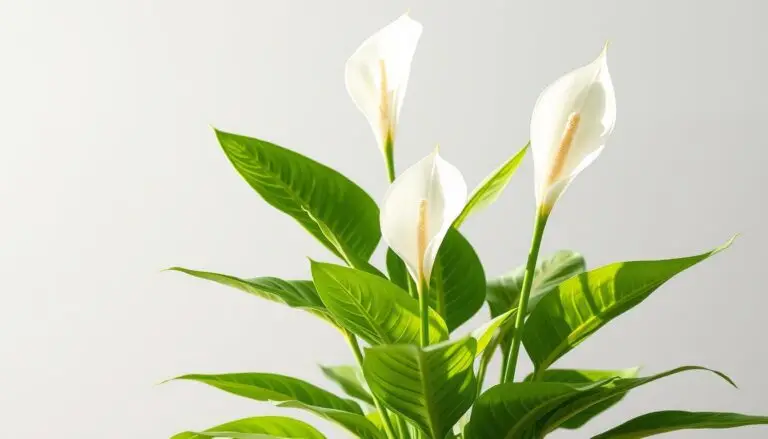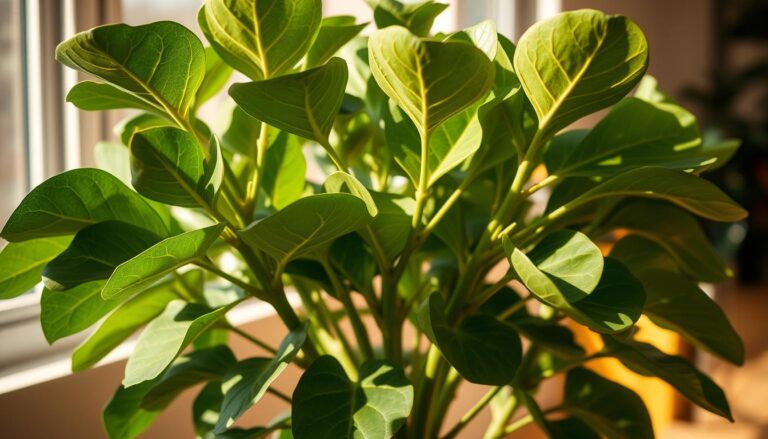best trailing plants to create your own jungle
Imagine stepping into your living room and feeling like you’ve entered a lush, green oasis. With the right hanging greenery, you can transform any corner of your home into a serene retreat. These natural wonders not only add beauty but also bring a sense of calm and vitality to your space.
From cascading vines to elegant foliage, trailing plants are perfect for creating a jungle-like vibe. They’re easy to care for, making them ideal for beginners. Whether you choose a Pothos or a Spider Plant, these options thrive with minimal effort. Plus, they look stunning in baskets or macrame hangers, adding a touch of creativity to your decor.
Ready to start your green journey? With the right tools and a bit of inspiration, you can grow these beauties effortlessly. Let’s dive into how you can turn your home into a vibrant, natural haven.
Table of Contents
Introduction to Trailing Indoor Plants
Bring nature indoors with cascading greenery that transforms your space. These species are known for their flowing growth and variegated leaves, making them a stunning addition to any room. Their ability to thrive in bright, indirect light makes them perfect for beginners and seasoned plant lovers alike.
What Makes These Species Unique?
These species stand out for their elegant, trailing growth. For example, the spider plant features long, arching leaves that add a touch of sophistication. Others, like the string of hearts, showcase delicate, heart-shaped foliage that flows gracefully. Their adaptability to various light conditions ensures they remain vibrant and healthy.
Starting Your Green Sanctuary
Creating your own green haven is easier than you think. Choose species that thrive in bright, indirect light, such as the spider plant or string of pearls. These low-maintenance options require minimal care, making them ideal for busy lifestyles. Arrange them in hanging baskets or on shelves to let their leaves cascade naturally.
With the right care, these species can transform your home into a serene retreat. Start your journey today and enjoy the beauty of flowing greenery in every corner.
Benefits of Creating Your Own Jungle at Home
Transform your home into a serene retreat with lush greenery that enhances both style and wellness. Adding vibrant foliage not only elevates your decor but also creates a calming atmosphere. Let’s explore how these natural elements can improve your space and well-being.
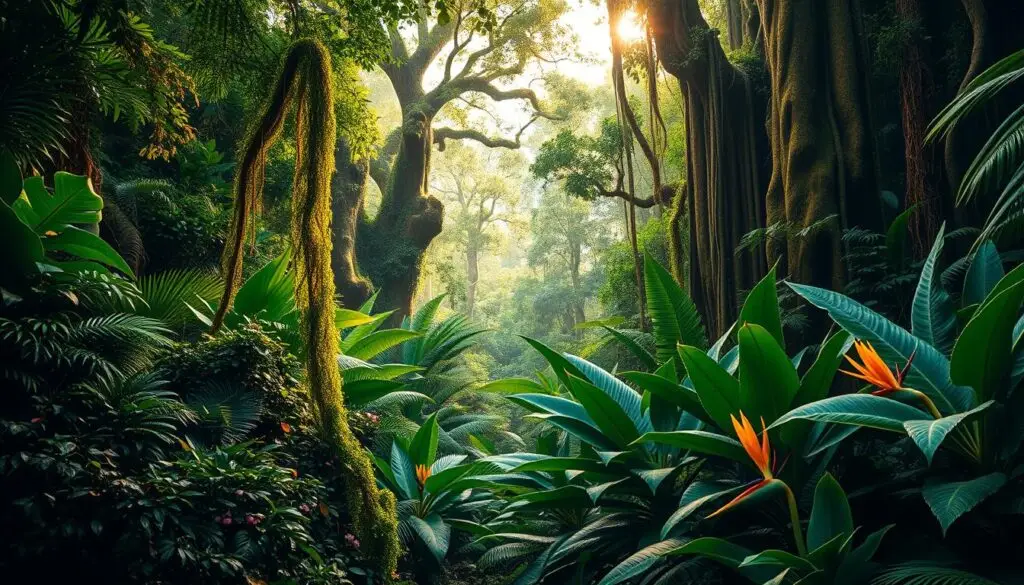
Aesthetic Appeal and Ambiance
The right size and variety of greenery can add a dynamic dimension to any room. Flowing foliage brings a sense of movement and life, making your space feel more inviting. From delicate flowers to bold leaves, each plant contributes to a unique aesthetic.
Proper care ensures your greenery remains vibrant and healthy. Managing water and humidity levels is key to maintaining their beauty. With the right balance, your home will radiate natural charm and tranquility.
Health and Air Quality Benefits
Greenery isn’t just about looks—it’s also a natural air purifier. Studies show that certain species can reduce indoor pollutants by up to 87% in 24 hours. This improves air quality, making your home a healthier place to live.
Being surrounded by nature has proven mental health benefits too. Research indicates that greenery can reduce stress and boost mood.
“Plants have a unique way of making us feel more connected to nature, even indoors.”
By choosing the right variety and providing proper care, you can enjoy both the aesthetic and wellness benefits of your green sanctuary. Start today and transform your home into a vibrant, natural haven.
Selecting the Perfect Trailing Plants for Your Space
Finding the perfect greenery to complement your space starts with understanding your options. From vibrant foliage to cascading vines, the right choice can transform your home into a natural retreat. Let’s explore how to research and match greenery to your environment.
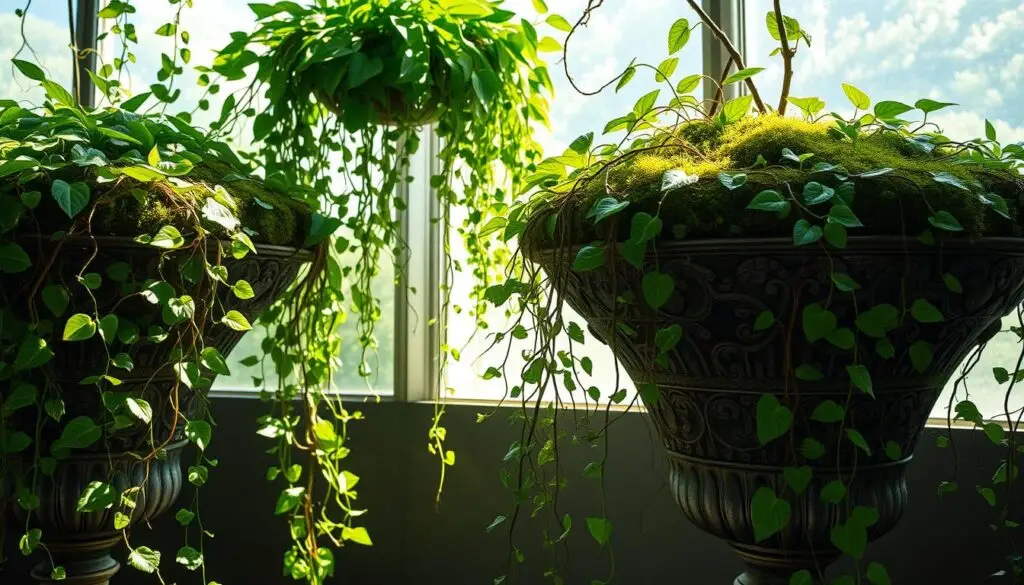
Researching Plant Varieties
Start by exploring species like Pothos and Lipstick Plant. These options are known for their adaptability and stunning appearance. Look for details like growth habits, foliage color, and care needs. For example, Pothos thrives in low light, while Lipstick Plant prefers bright, indirect light.
Consider the size of the vine and its growth potential. Some species can grow several inches per month, making them ideal for larger spaces. Others, like Scindapsus, grow slowly and are perfect for compact areas.
Matching Plant Needs with Your Home Conditions
Evaluate your home’s lighting, humidity, and space before making a choice. For instance, Pothos can thrive in low light, while Lipstick Plant needs bright, indirect light. Ensure the pot size matches the plant’s root system to promote healthy growth.
Check the soil requirements and watering frequency. Some species, like Scindapsus, prefer well-draining soil, while others, like Lipstick Plant, need consistent moisture. Use the table below to compare popular options:
| Plant | Light Needs | Watering Frequency | Pot Size |
|---|---|---|---|
| Pothos | Low to Bright Indirect | Weekly | 6-8 inch |
| Lipstick Plant | Bright Indirect | Twice a Week | 4-6 inch |
| Scindapsus | Bright Indirect | Weekly | 6-8 inch |
By researching and matching greenery to your home, you can create a vibrant, natural haven. Start your journey today and enjoy the beauty of lush foliage in every corner.
Tips and Techniques for Plant Care
Caring for your greenery collection doesn’t have to be complicated with the right tips. By focusing on watering, soil, and light, you can create the perfect condition for your greenery to thrive. Let’s dive into practical techniques to keep your collection healthy and vibrant.
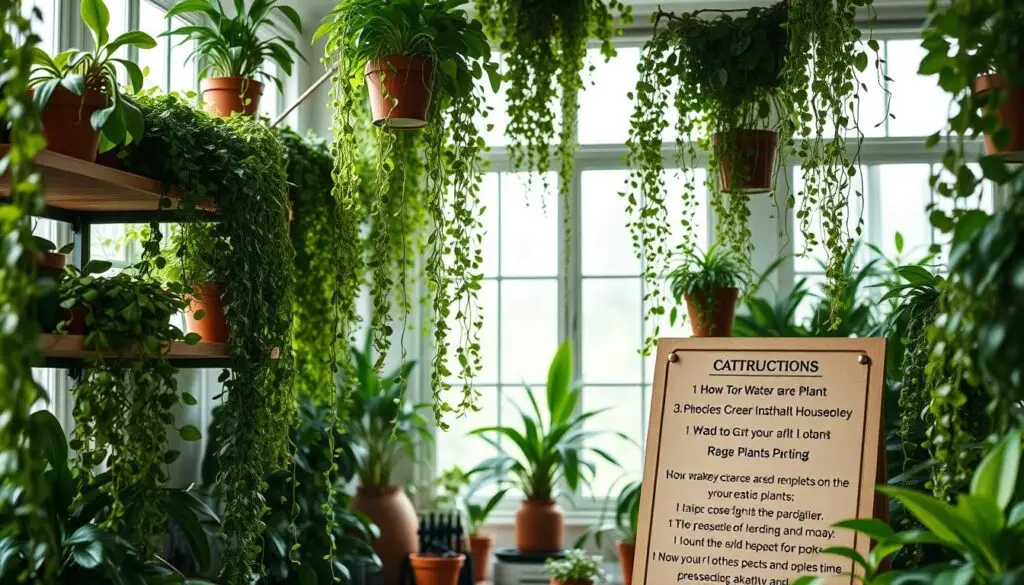
Watering, Soil, and Potting Tips
Proper watering is key to plant grow. Check the top inch soil before watering. If it’s dry, it’s time to water. Overwatering can harm roots, so ensure your pots have drainage holes.
Use well-draining soil to prevent waterlogging. A mix of potting soil and perlite works well. When repotting, choose a pot 1-2 inches larger than the current one to give roots room to grow.
Optimal Light and Humidity Management
Most greenery thrives in bright, indirect light. Avoid direct sunlight, which can scorch leaves. If your space lacks natural light, consider using grow lights.
Humidity is another crucial condition. Many species prefer 30-65% humidity. Use a humidifier or place a tray of water near your greenery to maintain moisture levels.
With these tips, your greenery will flourish, adding beauty and life to your space.
Popular Trailing Plant Varieties and Features
Discover the unique charm of popular greenery varieties that can elevate your home decor effortlessly. Each option brings a bit of color, texture, and personality to your house. Let’s explore some favorites and their standout features.
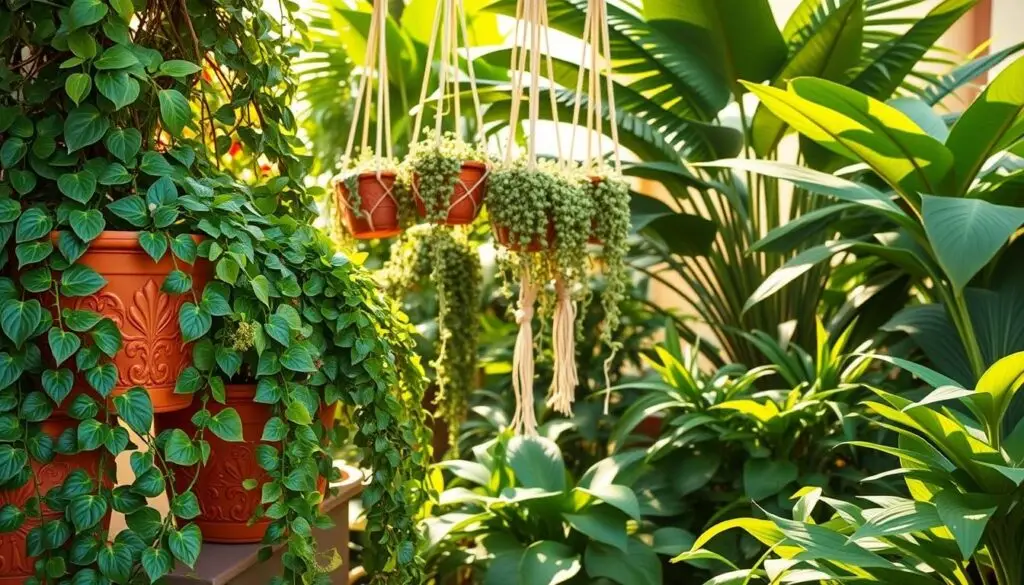
Pothos and Scindapsus: Versatile Choices
Pothos, also known as Epipremnum aureum, is a classic choice for any home. Its heart-shaped leaves come in shades of green, yellow, and white, adding a bit of vibrancy to your space. This option thrives in low light and requires minimal care, making it perfect for beginners.
Scindapsus, often called Satin Pothos, features silvery, wax-like leaves that shimmer in the light. It’s slightly slower-growing than Pothos but equally low-maintenance. Both varieties can trail or climb, offering flexibility in styling.
Spider Plant, String of Hearts, and Other Favorites
The Spider Plant is a hardy option with arching leaves that produce baby plantlets. It’s known for its air-purifying qualities and ability to thrive in various conditions. Perfect for adding a touch of greenery to your house.
The String of Hearts is a delicate beauty with heart-shaped leaves that cascade gracefully. Its stems can grow over 6 feet, making it a stunning addition to hanging baskets. This option prefers bright, indirect light and minimal watering.
Other favorites include the wax plant (Hoya carnosa) and the String of Pearls. Each brings its own unique flair, from the wax-like flowers of the Hoya to the bead-like leaves of the String of Pearls.
| Plant | Key Features | Light Needs | Watering Frequency |
|---|---|---|---|
| Pothos | Heart-shaped leaves, versatile | Low to Bright Indirect | Weekly |
| Scindapsus | Silvery, wax-like leaves | Bright Indirect | Weekly |
| Spider Plant | Architectural leaves, air-purifying | Bright Indirect | Twice a Week |
| String of Hearts | Heart-shaped leaves, cascading stems | Bright Indirect | Minimal |
Each option comes with its own care routine, ensuring you find the perfect match for your needs. Whether you choose the versatile Epipremnum aureum or the delicate String of Hearts, these varieties will transform your house into a green haven.
Styling Ideas for Hanging and Trailing Plants
Elevate your home decor with stunning displays of cascading greenery that bring life to any room. Whether you’re aiming for a modern minimalist look or a bohemian vibe, creative styling can transform your space into a green haven. Let’s explore some unique ways to showcase your favorite hanging plant varieties.
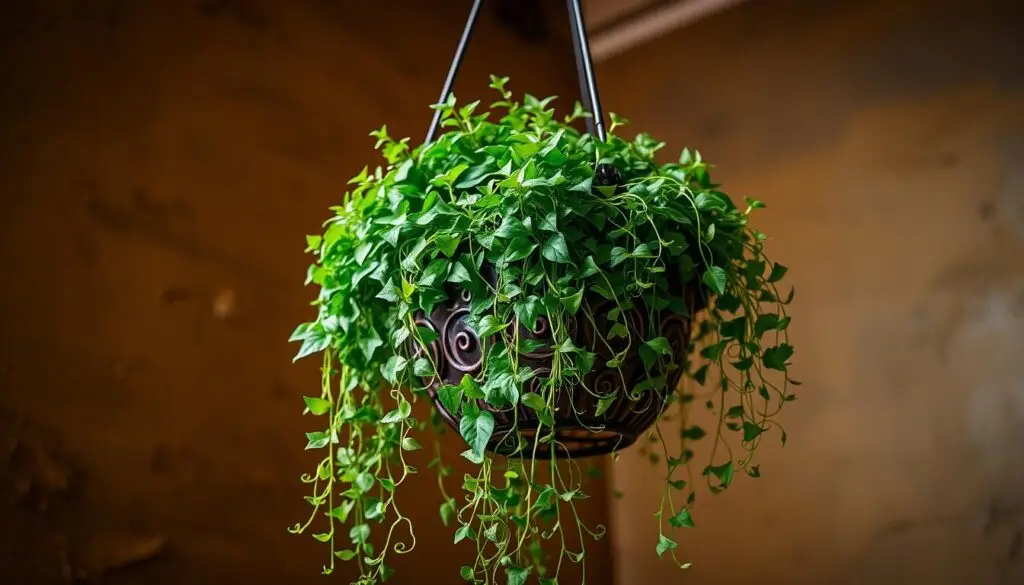
Creative Display Options for Indoor Spaces
One of the best ways to highlight your greenery is by using decorative baskets or macrame hangers. These not only add a touch of elegance but also allow the foliage to cascade naturally. Place them near windows where they can thrive in bright indirect light.
For a modern look, consider using sleek, geometric planters. These pair well with minimalistic interiors and draw attention to the greenery’s natural beauty. If you prefer a bohemian style, opt for colorful macrame hangers that add texture and warmth to your space.
Positioning is key to maximizing both aesthetics and plant health. Hang your greenery in areas with ample bright indirect light, such as near east or west-facing windows. This ensures they receive the right amount of light without the risk of scorching.
Here are some practical tips for arranging your hanging plants:
- Use hooks or brackets to suspend greenery from ceilings or walls, saving floor space.
- Group multiple baskets at varying heights to create a dynamic, layered effect.
- Incorporate footed planters to elevate trailing varieties, adding depth to your decor.
By experimenting with these ideas, you can create a visually appealing and healthy environment for your greenery. Start today and enjoy the beauty of cascading foliage in every corner of your home.
Troubleshooting Common Plant Issues
Even the most resilient greenery can face challenges if care conditions aren’t ideal. From improper watering to light deficits, understanding these issues ensures your greenery stays vibrant and healthy. Let’s explore how to identify and resolve common problems that may arise over the year.
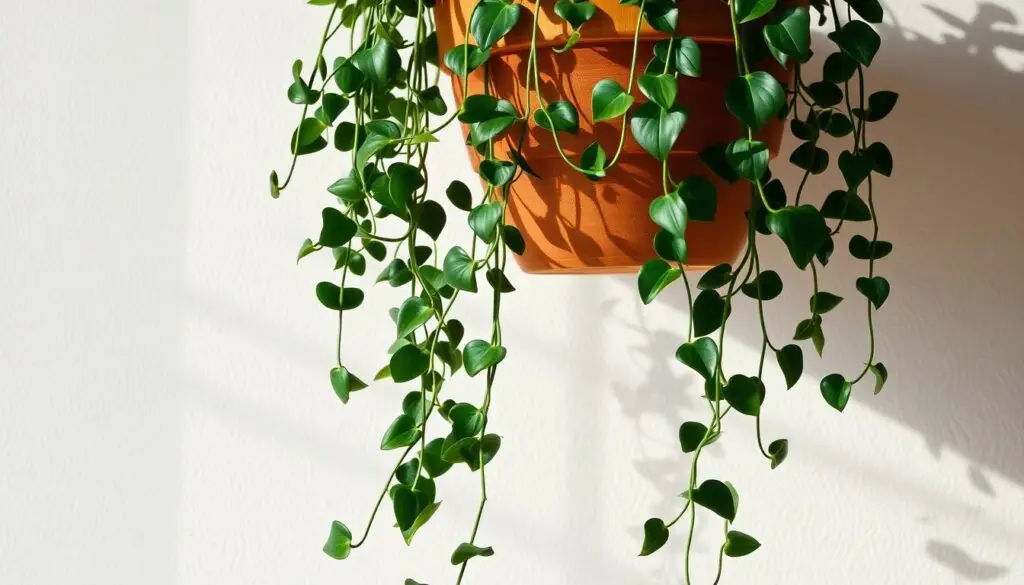
Identifying Light, Water, and Pest Problems
One of the most common issues is improper water top management. Overwatering can lead to root rot, while underwatering causes wilting. Check the top inch of soil before watering—if it’s dry, it’s time to water. Ensure your pots have drainage holes to prevent waterlogging.
Light deficits are another challenge. Yellowing leaves often indicate insufficient light. Move your greenery to a brighter spot with indirect sunlight. Avoid direct sun, which can scorch leaves.
Pests can also affect your greenery, especially during summer. Look for signs like sticky leaves or tiny insects. Regularly inspect your greenery and use insecticidal soap for minor infestations.
| Issue | Signs | Solution |
|---|---|---|
| Overwatering | Yellow leaves, soggy soil | Check water top, improve drainage |
| Light Deficit | Yellowing, stunted growth | Move to a brighter spot |
| Pests | Sticky leaves, tiny insects | Use insecticidal soap |
By addressing these issues promptly, you can keep your greenery thriving throughout the year. Adjust care routines as seasons change to ensure optimal health and beauty.
Conclusion
Start your green journey today with expert tips and care techniques. This guide has shown you how to select the right type of greenery, from Philodendron Brasil to other favorites, and match them with ideal light conditions like low light or bright indirect settings.
Remember, proper care ensures your greenery thrives. Whether it’s managing bright light needs or troubleshooting common issues like pests, every step counts. With the right approach, you can create a vibrant, calming space that feels like a natural retreat.
Take the first step today. Choose a type that suits your home, like the versatile Philodendron Brasil, and apply the techniques shared here. Your green haven awaits!


